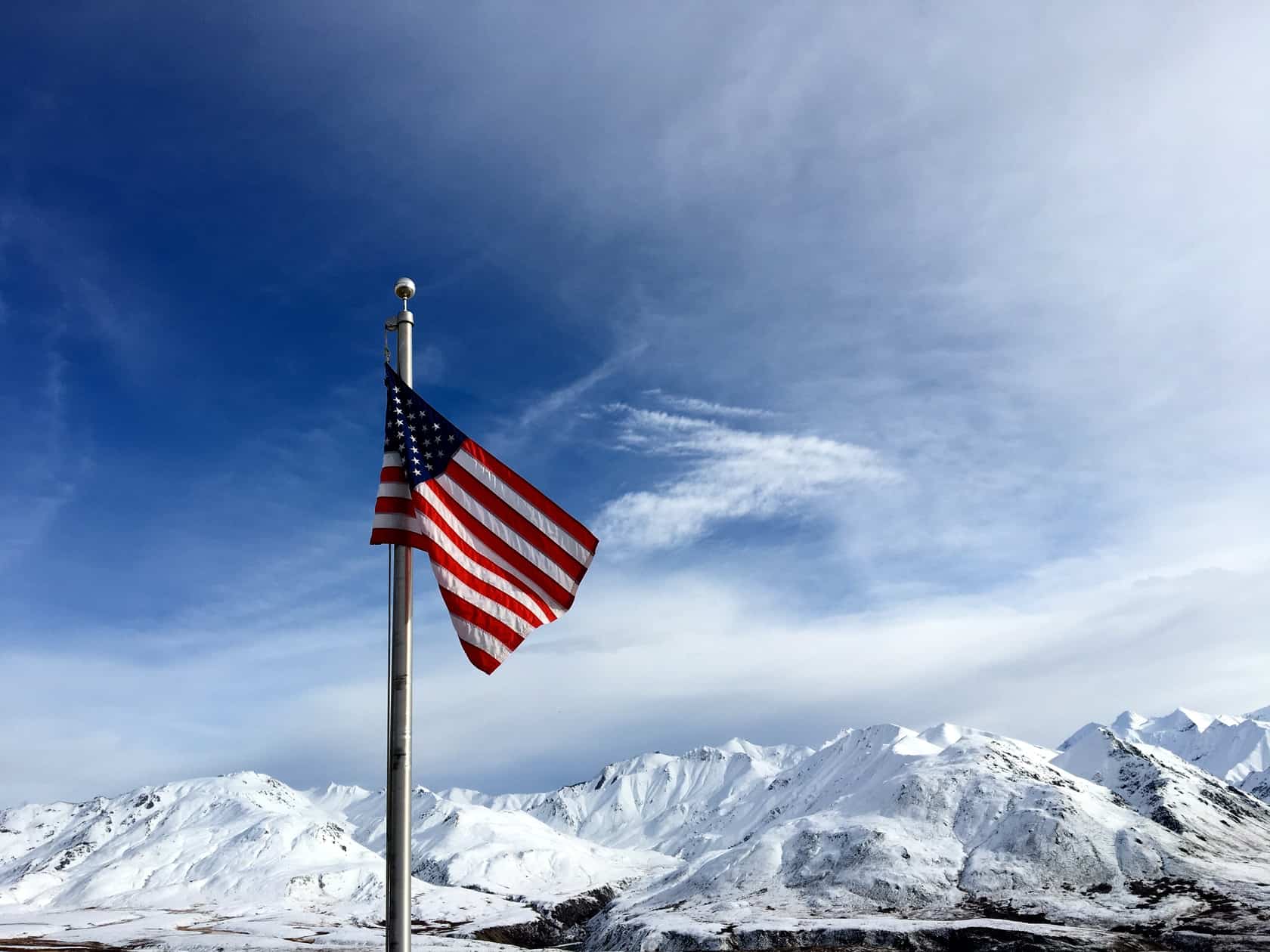What is a classic?
It’s an exemplary work of its genre that’s stood the test of time. It’s Pet Sounds. It’s War and Peace. It’s a ’69 Mustang. But, not only does a classic serve as the masterpiece on a pedestal. No, a classic is also a reference piece against which later members of its genre are compared, are tested. The classic is the touchstone.
While Alaska only became the 49th state some 60 years ago, it’s still got its fair share of classics… especially if you like to get outdoors.
Less than a day into my Alaskan experience I found myself lining up for the Equinox Marathon. You may never have heard of the Equinox, but this was the 53rd running of the race. As far I know, that would make it the second-oldest mostly off-road marathon in the country after Pikes Peak.

A few minutes before the race someone makes a simple announcement in the student center and folks head outside to grassy patch that doesn’t even have a start line. After “go,” runners stream across a flat field for all of 100 yards before the course pitches steeply uphill where 100 yards further along the route funnels into wide singletrack before continuing along the campus. You spend the following hour alternating between wide Nordic ski trails, grass fields, and small sections of pavement. Throw in a cool morning and more leaves on the ground than on the trees and, I tell you, it feels an awful lot like a high school or college cross country invitational. And, really, what’s better than a couple hundred folks throwing down on mixed terrain on an autumn morning? Not much.

The middle third of the Equinox has an essential hallmark of a classic, an easily recognizable feature that distinguishes the example. In Fairbanks, Ester Dome is the Mona Lisa’s bemused smile. Love it or hate it, you won’t soon forget it. The primary 1,800-foot climb up the dome is a mix of singletrack and dirt road, on both of which most folks mix in some walking amidst more runnable portions. After the unofficial aid station/beer check, you summit at the real checkpoint before heading back down. What no one told me, at least, is that there’s an out and back with a solid set of descending rollers before you climb back up the rollers to the top of the dome for a second time. Iconic, indeed!

From the top of Ester Dome, there’s the quarter-mile, drop-off-a-cliff descent down Saari’s chute that leads you into what might be the nicest section of the course: two miles spent gradually descending rustic doubletrack through birch forest. Then, it’s on to another mix of dirt roads, pavement, a power-line cut, and grass fields to the finish where the Fairbanks running community will spend most of the day.

Along the way, you’ll start to recognize a handful of fans who you’ve seen six or eight times along the way. You’ll see them at the finish, while you meet a whole bunch of fellow runners, and that’s all before the evening’s dinner/award ceremony. All in all, I’ve yet to see a race of its size that’s simultaneously more professional and more intimate.

While in Fairbanks, I had the air let out of my balloon when locals let me know that my next planned stop, Denali National Park, was more or less closed for the season. Bus service through the park was done for the season while each day only 400 lucky cars would be driven into the park based on a lottery held much earlier. Drat! Ah, but let hope spring eternal! Undeterred, I camped at Riley Creek, the campground just inside the national park entrance, the day following the Equinox. Not an hour had passed since I’d set up camp when a fellow traveler pitched his tent—a Big Agnes Copper Spur identical to mine—at the neighboring site, came over, and offered me a beer and some conversation. It didn’t take long for us to hit it off and for him to offer me a ride into the park the following day.
What a day! Denali on a good weather day is a sight to behold. I’m not just talking about the tallest mountain in North America, but, at the very least, the viewshed along the entire length of the 90-mile-long, sole primary road through the park. Now, a drive through a park isn’t my preferred mode of experiencing nature and, earlier in the year, I scoffed at my parents’ bus ride down the so-called Wilderness Highway, but, at least at road lottery time, the drive felt like an immersive wilderness experience. This was not a land of people, it was a wild land that we merely passed through.

Without a doubt, the frequency and proximity of spectacular wildlife influenced this perspective. Moose munched on brush ablaze in autumnal splendor. A fox lay lazily in a hillside road cut. Huge brown bears chowed down on the bumper crop of blueberries near and far. An owl perched in a spruce above a pullout parking lot. While further off, a pair of binoculars brought the many herds of snow-white Dall sheep, one of the raisons d’etre of the park, into easy view.

Oh, and the Alaska Range! For entire length of that park’s road, the range serves as its southern crenellation. The higher peaks remain snow-capped throughout the year, while an early September storm brought a blanket of snow down to 3,000′, which meant that snow lined the roadside meadows in the higher middle section of the drive. Then, deep within the park, there’s its namesake, Denali née Mount McKinley. More than just a peak, this is a massive, glacier-strewn mountain complex that towers more than 20,000 feet into the sky. On a clear day, the mountain is inspiring and humbling.

Some six-hours drive further south sits a much shorter peak that similarly humbles and inspires, Mount Marathon, which rises over 3,000 feet straight up from downtown Seward on Alaska’s Southcentral coast. Every Fourth of July, the mountain hosts an eponymous race, which for nearly 90 editions, runners climb the mountain from downtown to a prominent rock overlooking town and back down to town.

The course is open, meaning entrants can follow whatever route they want so long as they tag the summit. In reality, there are roughly established routes both up and down. Once runners leave the town’s roads half a mile in, they briefly climb through a rooty, treed section before pitching up often slick-as-snot mud on hard-packed clay. The upper half of the climb is consistently steep on manageably rocky slopes, so long as you stay on the faintly established routes. If you stray, you can end up lightly scrambling up rockier prominences.

Once you hit the race’s top, it’s worth stopping and taking in the views ahead of you further up the mountain, to the south toward Resurrection Bay and its islands, as well as straight down to Seward… all of one mile away!

Ah, now for the fun part, the part for which the race gains its notoriety. The upper two-thirds of the descent snakes along “the groove,” a well-worn path through deep scree, small rock crumbles that give enough underfoot to lessen the jarring and predictable enough to allow folks to go all out. It’s not uncommon for the leaders to descend this 2,000-foot stretch in well under 10 minutes. From here, things get a bit dicier as most folks descend “the creek,” which is, quite literally, a creek. Part of this stretch are runnable on a first pass, as you cross back and forth over the creek to established singletrack on either side. However, further down, it’s a real scramble with ledges and plenty of smooth, wet rock. This was not within my comfort zone and I took plenty of time negotiating this section. Enough time that I suppose if I were to ever race Mount Marathon, I might descend the less direct trail we went up. Below “the creek,” some folks continue on the watercourse and the direct line via “the cliffs,” the perilousness of which I can only imagine. Me, I took the rooty Switchback Trail with which I’d started the climb.

From the base of the mountain, it’s another half mile back into town and the finish. In late-September, after all the cruise ships have left Seward, downtown is deserted. However, every Fourth of July, each finisher runs past hordes of spectators lining the streets before engaging in optional revelry through the day and well into the night.

